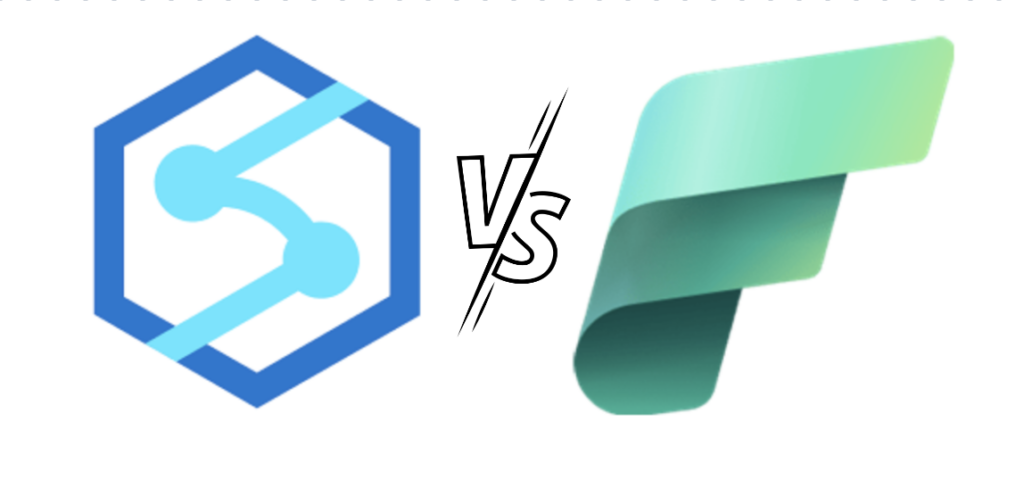Comparing Microsoft Fabric SaaS to Azure Synapse Analytics PaaS
Step into the future of data analytics with Microsoft Fabric, the game-changing SaaS analytics platform that is revolutionizing how businesses harness the power of their data. In this blog post, Let’s delve into the dynamic world of Microsoft Fabric, explore its advantages over Synapse Analytics, and highlight the key benefits of choosing a SaaS (Software as a Service) model.
Microsoft Fabric: A SaaS Analytics Platform
Microsoft Fabric stands out as a comprehensive SaaS analytics platform, delivering end-to-end business solutions. While built upon the robust foundation of the Power BI platform, Fabric also extends the capabilities of Azure Synapse Analytics, catering to diverse analytics workloads.
Differentiating SaaS from PaaS
To understand Microsoft Fabric’s significance as a SaaS product, it’s essential to distinguish it from Platform as a Service (PaaS). PaaS allows users to create, operate, and maintain their applications in the cloud, while SaaS offers users access to software programs hosted on the internet without the need for infrastructure management. With SaaS, users benefit from hassle-free scalability, maintenance, and updates, paying only for the resources they consume.

How do the above definitions apply to Microsoft Fabric?

The table below further contrasts these two products and approaches:
| Area of Comparison | Synapse Analytics | Microsoft Fabric |
| Target Users | Developers or users with technical knowledge. | Developers and end users can use it. Anyone without IT knowledge can start in minutes. UI looks like Power BI and Microsoft 365. |
| Technical understanding | Some knowledge is required for the basic setup. | There is no requirement for technicalities Microsoft handles everything on setup. |
| User controls | Data of the application can be managed by the customer. | Everything is managed by Microsoft. |
| Access | Gets access to Synapse Studio for pipeline creation and runtime access for deployment. | All users get access including the end user. |
| Scale | Admins must change the configuration to scale. | Scale up or down the processing power as we need. |
| Security | Role-based access control (RBAC) to manage different aspects of Synapse Studio. Also, row/column/object level security is provided. | Hosted on Microsoft cloud infrastructure. OneSecurity layer manages access across all Fabric objects. |
| Licensing | Serverless billing option. 1 to 3-year reserved instance licenses available for dedicated pools. | PAYGO option without long-term commitment, Reserved Instances can save money. On-demand scale-up and down feature saves money. |
The Advantages of Microsoft Fabric as an Integrated SaaS Product
Microsoft Fabric’s SaaS approach offers numerous advantages:
- Simplicity: With Fabric, simplicity is key. From quick sign-up to rapid deployment, users can experience actual business benefits within minutes. There’s no need to worry about infrastructure procurement, setup, or maintenance. All the features and functions of Microsoft Fabric are conveniently accessible through a single web portal.
- Completeness: Microsoft Fabric fulfills all your analytics needs, providing end-to-end capabilities. From data integration to modeling, visualization, analysis, and AI/ML operations, Fabric empowers you to make data-driven decisions and scientific forecasts, giving your organization a competitive edge.
- Collaboration: Fabric facilitates seamless collaboration among teams involved in the analytics process. Data engineers, data warehousing experts, data scientists, analysts, and business users can easily work together on the same platform, sharing insights, data, and best practices.
- Governance: With Microsoft Fabric, you can establish a single, reliable source of truth. Unified governance features enable you to control data quality, data security, privacy, compliance, and access, ensuring consistent and reliable data governance across your organization.
- Innovation: Microsoft Fabric keeps you at the forefront of innovation, leveraging the latest advancements from Microsoft and its partners. With built-in generative AI and language model services like Copilot, you can create groundbreaking AI experiences that you’d have to provision and set up separately in a PaaS environment.
- Openness: OneLake serves as the primary data lake based on open formats like Parquet and including interfaces with other cloud services like Amazon S3.
Ready to unlock the true potential of your data and accelerate your analytics strategy?
Contact us now for a free data strategy briefing and discover how Microsoft Fabric can transform your business. Don’t miss out on this opportunity to revolutionize your data analytics and stay ahead of the competition.


